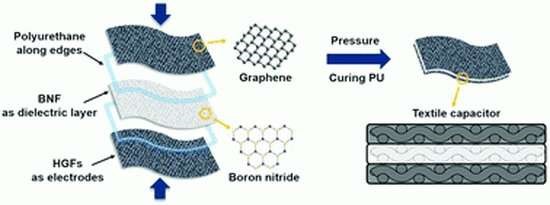Graphene inks could lead to washable wearables
The future of mobile devices is wearable – but we aren’t talking about watches or clip-on accessories or even bulky battery packs sandwiches within pockets of shirts.
Researchers at the University of Cambridge have developed washable electronics components that can be incorporated directly into fabrics. These devices are bendable, breathable, and comfortable to wear. Applications could include flexible circuits, healthcare monitoring, energy conversion, and other applications.
The Cambridge researchers, working in collaboration with colleagues at Jiangnan University in China, have shown how graphene – a two-dimensional form of carbon – and other related materials can be directly incorporated into fabrics to produce charge storage elements such as capacitors, paving the way to textile-based power supplies which are washable, flexible, and comfortable to wear.
Graphene inks can be used in textiles able to store electrical charge and release it when required. The new textile electronic devices are based on low-cost, sustainable, and scalable dyeing of polyester fabric. The inks are produced by standard solution processing techniques.
Building on previous work by the same team, the researchers designed inks which can be directly coated onto a polyester fabric in a simple dyeing process. The versatility of the process allows various types of electronic components to be incorporated into the fabric.
Most other wearable electronics rely on rigid electronic components mounted on plastic or textiles. These electronics are not machine-washable and are often uncomfortable to wear.
To create the new safe, comfortable, and environmentally friendly inks affordably, the researchers suspended individual graphene sheets in a low boiling point solvent, which is easily removed after deposition on the fabric, resulting in a thin and uniform conducting network made up of multiple graphene sheets. The subsequent overlay of several graphene and hexagonal boron nitride (h-BN) fabrics creates an active region, which enables charge storage. The resulting “battery” is bendable and can withstand washing cycles in a normal washing machine.
The work done by the Cambridge researchers opens a number of commercial opportunities for ink based on two-dimensional materials, ranging from personal health and well-being technology to wearable energy and data storage, military garments, wearable computing, and fashion.


